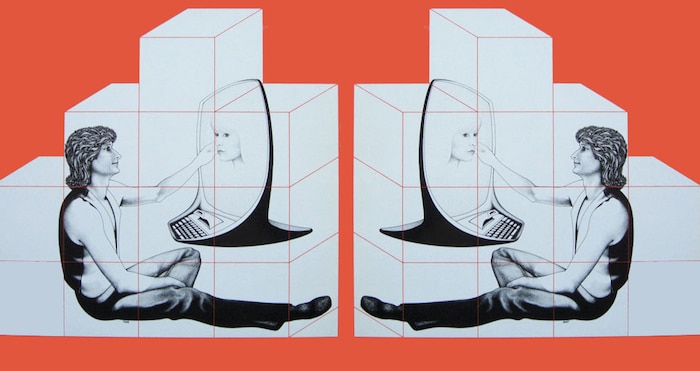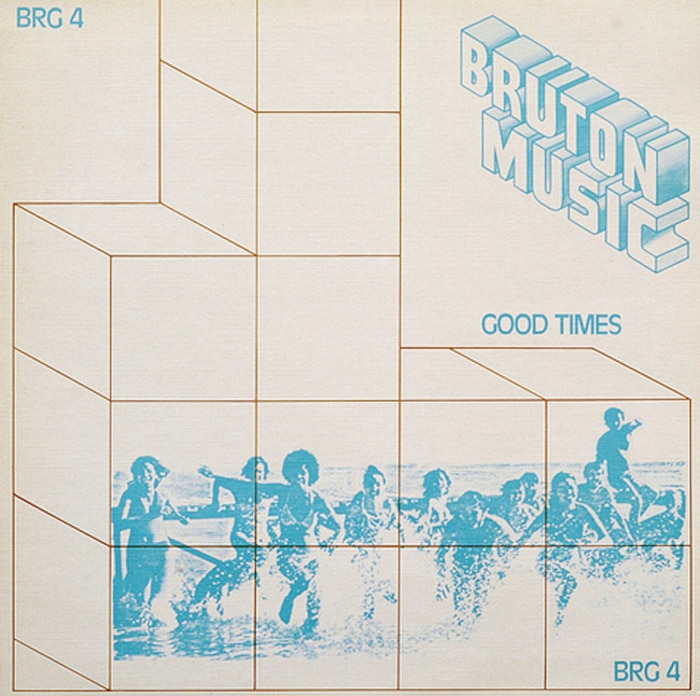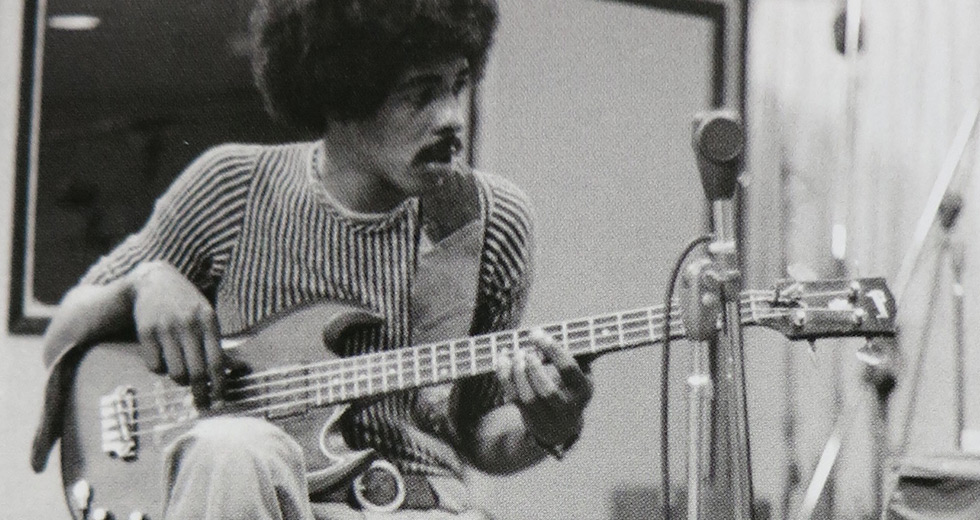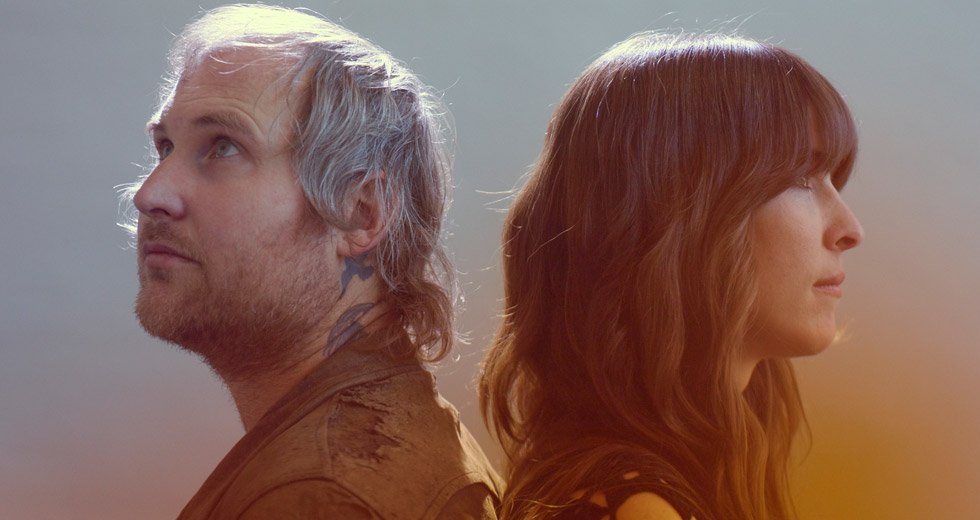Library Music’s Peculiar Thrills
Jonny Trunk explains how he came to love library music – the egoless genre that surrounds us daily

Pop music is not really for me. It never has been. I remember being at school and feeling left out when a new Genesis album came out. Friends would spend hours singing lyrics I didn’t know, getting excited about upcoming concerts or talking about their favourite tracks from side two. At other times they’dbe drawing the next top pop band’s logos and copying album artwork all over their school books. Roger Dean’s fantasy worlds, Pink Floyd’s funny hammers or, for the punkier guys, the Crass logo; this youthful scribbly world I felt absolutely no part of at all. Radio 1 was never on in my house, fanzines were never in my satchel, badges not on my lapels, and I wouldn’t be buying the latest youth fashions from the local boutiques at the weekend either.
But I did watch the TV. It offered good pictures, funny kids shows; a modern, creative and often fantastic world with interesting music. And late at night it broadcast films I’d never seen before, which is where my musical education really began. I’d watch a good old film where all the people wore great clothes, spoke in a hip fashion, drove cool cars and lived in cinematic worlds that looked beautiful.
In my dreams, when I had a party, I wanted the music they used in The Party, or the sounds from that wild psychedelic happening in Midnight Cowboy.
And they sounded great. They had music created by composers and orchestras with smashing names, not young bands trying to be cool. Lyrics would go ba-ba-da, drums would pound out infectious jazz rhythms and I had an immediate affinity with it all. I liked the melodies, the instrumentation, the girls on screen and realised that this was the music I wanted in my world. If I was ever going to drive a car, I wanted groovy numbers coming out of the door speakers. In my dreams, when I had a party, I wanted the music they used in The Party, or the sounds from that wild psychedelic happening in Midnight Cowboy.
But these dreams started up a whole new set of problems for me. Music in my town was only for sale at the local Boots (yes, the chemist used to have a large record and tape department), or the local Our Price. I’d go in and mention music from last night’s TV and the early-morning looks coming back across the counter at me would be blank.
Thankfully, years of being dragged around jumble sales as a kid made me unafraid of walking into charity shops, or any outlet offering old and broken things for sale, and it was there I’d find the most interesting music. Old soundtracks, weird compilations, all sorts of unexpected joys for pennies. It was cheap and interesting and I hadn’t been manipulated into buying it by the NME. And my collection started to slowly grow.
It got worse when I moved to London and found a shop on Dean Street specialising in nothing but film music. Going through the shop door was like entering a secret, stuffy but exciting musical world. The walls were decorated with rare and desirable vinyl, cool covers with Steve McQueen, Tony Curtis or someone being murdered. Here my interest was fed and fattened, growing into a hot raving passion; I began dealing, swapping, meeting, chatting and learning all the time. Every few months a film fair would pop up in Westminster and among the peculiar, often unhygienic old men, I’d meet fellow collectors of my age with identical histories of late night TV and a love of groovy old things.
I was quickly ticking all the soundtrack boxes, but still coming up with mental lists of desired records that seemed not to exist at all. Who produced the music for Open University programmes in the mid-’70s? Where did all the music for School And Colleges TV come from? Where can I find that scary track from the public information film about drowning? What about testcard jazz? Is there a score to Pipkins? And that funny sex film we watched last night – where does that lovely melodic electronic thing that appears about halfway through come from? Add in the vast number of classic TV themes and incidentals that didn’t seem to be available on any format anywhere and we were left with a heap of important, unanswered musical questions.
Little did I know that a chance meeting with a bland-looking LP in Soho would change everything. The album was simply called Bosworth Backgrounds. It had the tracklisting on the front of the album, mentioned a composer I’d never heard of and had the feel of a science about it all. I thought it was an educational record and when I took it home and played it, the music was exactly the kind of sound I was trying to find – funny noises perfect for an OU broadcast about virus samples multiplying in a petri dish.
A hasty trip to the address on the album cover brought me to the offices of Bosworth Music in Regent Street, a dusty, charming warren of rooms full of musical scores and old 78rpm discs. I felt like their first visitor in a decade. They kindly explained that what they produced was “library music,” a cunningly simple concept: a music library provides a broadcaster with low-cost, ready-made music for use in film, TV and radio. It cuts out the vast expense of employing a specialist composer or paying a licensing fee to use a popular track. It’s easy, cheap and very good quality. There were a number of library companies in London and over the years they’d provided classic TV with brilliantly composed, often highly memorable music. Albums were made according to genre – so there would be music for drama, love, travel, the city, space... you get the idea.
My conversation with the Bosworth boys opened up a whole new world of sound, and answered a whole lot of questions. All that mysterious missing music from film and TV was library music. That chirpy Terry and June theme? Library music. The gallery theme from Vision On? Library music. Mastermind’s brooding opener and Mary, Mungo and Midge? Both library music.
I made a deal with Bosworth and started issuing some of their recordings, including some electronic noises originally used in a 1972 Marmite commercial. About the same time, other geeks worshipping at this strange church started their own release programmes. Library music collectors were spreading out, sharing bizarre facts about famous themes, classic library cuts and more besides. People were realising the incidental music on shows such as The Sweeney or The Prisoner, from thrilling orchestrals to spooky drum passages, was all library music.
Dealers, as well as collectors, started getting into library records; hot albums were shooting up in value, cunning traders were getting these “useless records” free from universities, schools and old radio stations and flogging them for big bucks. Artists started sampling them, TV started using old classic themes again and all the while enthusiasts just kept learning more. Over the years, since interest exploded, more and more library compilations have come out, revealing facts and sonic quirks about this secret, functional, but uncommercial world of fabulous and mad sounds.
The whole idea of making library music is unlike anything else. Composers were instructed to make music for TV scenes that did not yet exist.
Previously unsung composers such as Alan Hawkshaw or Roger Roger (yes, that’s his real name) were sonic mavericks. It’s not the nostalgic musical trip, the unusual composers or the fact you’re dealing with records that aren’t meant to be listened to as records that makes it so fascinating; it’s simply the music and its unconventional ways. Yes, it’s composed properly and then played on real instruments in real studios, but the difference is in the genesis.
For example, a library will need music, so they get a composer to write some. Rather than “make us a pop record,” the brief will be more like “make us some music for weather.” The whole idea of making library music is (or was in the ’60s and ’70s) unlike anything else and composers were instructed to make music for TV scenes that did not yet exist. The results can be quite normal, based on simple classical or jazz forms; at the opposite extreme, it can be the most extraordinary music ever dreamed up.

Many of the classic recordings were made while studio technology was changing fast. You can get a full orchestral library album one week, the next an LP made by a single composer sitting in a studio with the latest strange synthesiser and only the vaguest notion as to how it actually works. Also – and this I always find important – it is made without ego.
I can’t call it a revival since there was never a market to be revived.
Many of the musicians and composers would later find fame (Richard Thompson, Jimmy Page), some had come from it (Jerry Dammers), some were still flush with it (Ennio Morricone, Serge Gainsbourg). There are no artists’ faces on the covers of library albums, no pictures of musicians looking cool, no posing, no ridiculous title or extravagant sleeves. Well, there are a couple actually, maybe hundreds, which is why in 2005 I got together with fellow collectors and produced The Music Library, a book cataloguing some of the most eye-catching and beautiful library album cover art never seen. The designs look like nothing you’d have seen in any other form of music, though they are starting to seep into the culture, influencing the way contemporary musicis packaged.
Over the past 15 years more and more companies, collectors and libraries have made this once forgotten music commercially available. And it’s a scene that’s still going strong, with “lost” recordings and albums coming out practically every month. The interest – I can’t call it a revival since there was never a market to be revived – is a source of joy to me and thousands of fellow listeners who’ve been waiting to hear again the sounds of Teddy Edward, Roobarb or that funny opening title track from Angling Today. Now that’s what I call music.
A version of this article appeared in The Daily Note, a free daily newspaper distributed in London during the 2010 Red Bull Music Academy.

